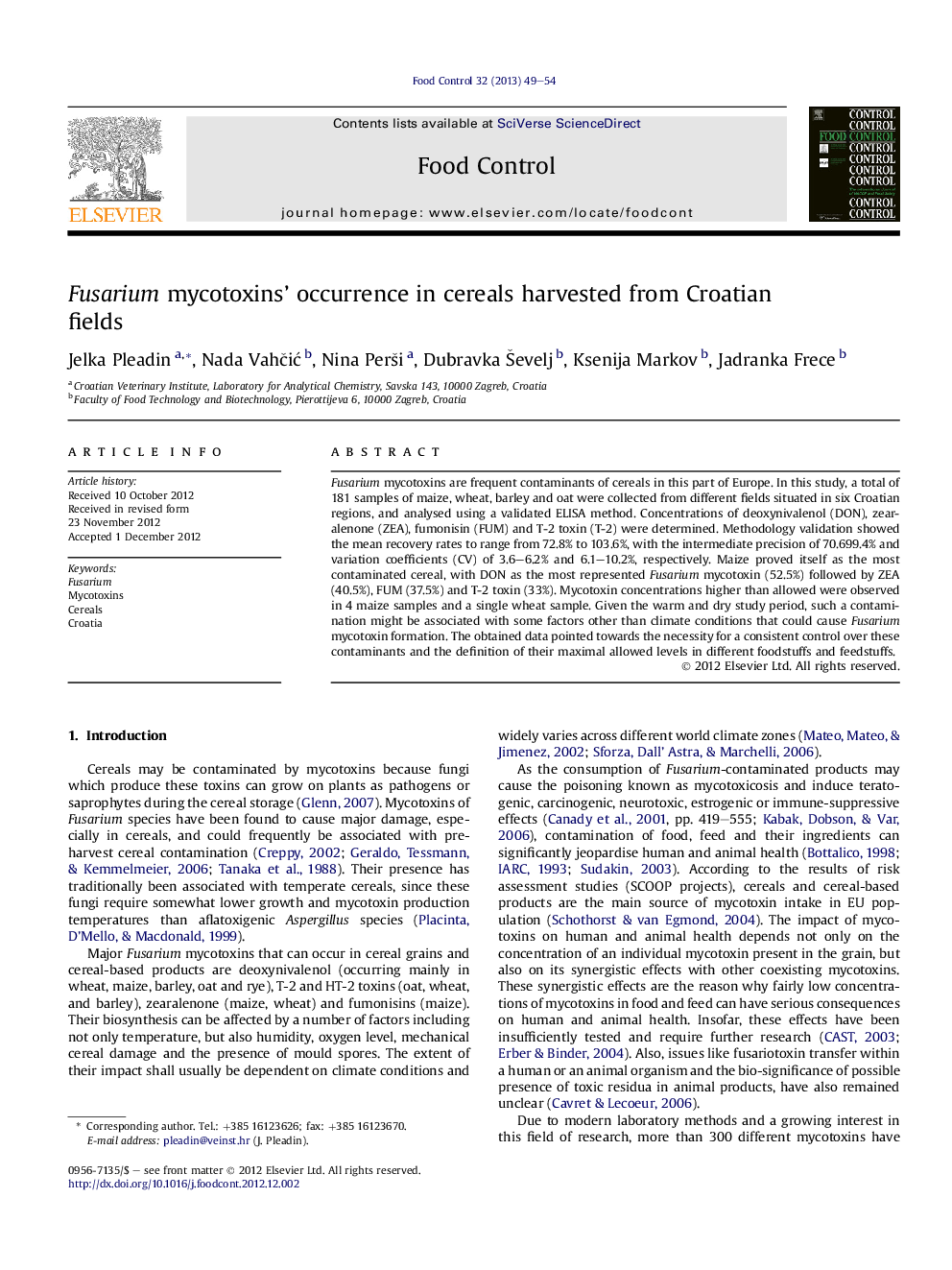| Article ID | Journal | Published Year | Pages | File Type |
|---|---|---|---|---|
| 6393052 | Food Control | 2013 | 6 Pages |
Fusarium mycotoxins are frequent contaminants of cereals in this part of Europe. In this study, a total of 181 samples of maize, wheat, barley and oat were collected from different fields situated in six Croatian regions, and analysed using a validated ELISA method. Concentrations of deoxynivalenol (DON), zearalenone (ZEA), fumonisin (FUM) and T-2 toxin (T-2) were determined. Methodology validation showed the mean recovery rates to range from 72.8% to 103.6%, with the intermediate precision of 70.699.4% and variation coefficients (CV) of 3.6-6.2% and 6.1-10.2%, respectively. Maize proved itself as the most contaminated cereal, with DON as the most represented Fusarium mycotoxin (52.5%) followed by ZEA (40.5%), FUM (37.5%) and T-2 toxin (33%). Mycotoxin concentrations higher than allowed were observed in 4 maize samples and a single wheat sample. Given the warm and dry study period, such a contamination might be associated with some factors other than climate conditions that could cause Fusarium mycotoxin formation. The obtained data pointed towards the necessity for a consistent control over these contaminants and the definition of their maximal allowed levels in different foodstuffs and feedstuffs.
⺠Concentrations of deoxynivalenol, zearalenone, fumonisin and T-2 toxin were determined. ⺠Maize proved itself as the most contaminated cereal. ⺠DON was the most represented Fusarium mycotoxin followed by ZEA, FUM and T-2. ⺠Mycotoxin concentrations higher than allowed were observed in 4 maize and a single wheat sample.
